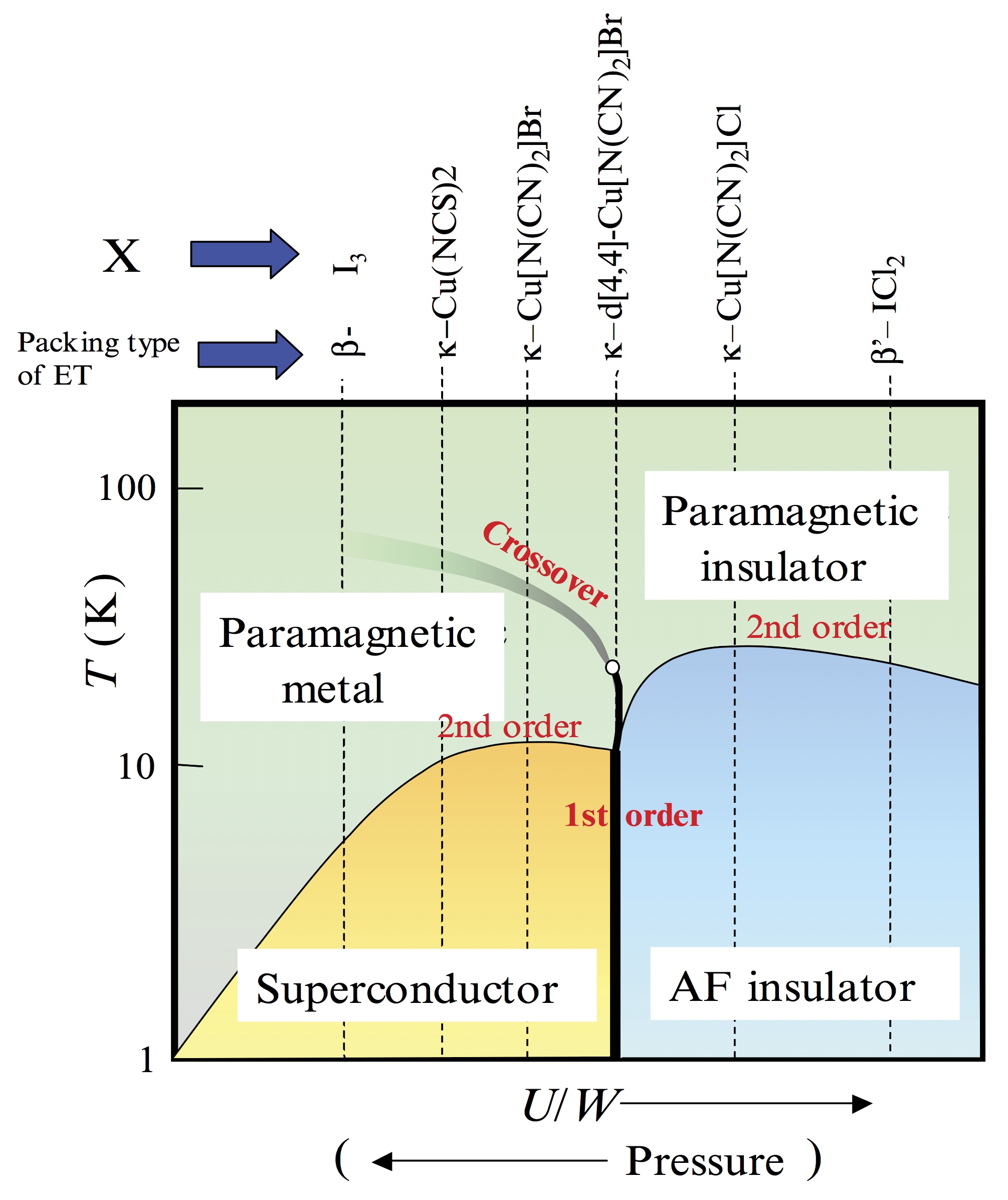Organic Superconductors
Chuck Agosta - Clark University
In 1959 Bardeen, Cooper, and Schrieffer published a microscopic theory of superconductivity that explained elemental superconductivity(superconductivity in single elements or alloys) based on an attactive potential mediated by phonons in the crystal. Unfortunately this theory does not work for many of the recently discovered superconductors such as the high temperature cuprates and for the most part does not work for the organic superconductors either. So we have to start with what we do know. Many studies suggest that some of the organic superconductors have Cooper pairs with d-wave symmetry. This is similar to the high temperature cuprates. But this is just the beginning. One of the most interesting parallels between the organic conductors and the cuprates is the carrier density-temperature phase diagram. Below are two diagrams that represent the cuprates and the organic conductors. The carrier density is adjusted in the cuprates by oxidizing the samples in an oven. In the organic superconductors the carrier density can be changed by pressurizing the sample as on the page about organic metals, or by chemical substitution, sometimes called chemical pressure that also changes the bond lengths and consequently the overlap of orbitals, hopping integrals etc. The result is a phase diagram similar to the cuprates. This general phase diagram is common to many of the families of these so called unconventional superconductors. The cuprates, heavy Fermion, pnictides, dichalcoginides, and organic superconductors may all have a related microscopic pairing mechanism as discussed in these review papers. 1, 2, 3, 4
 A sketch of the superconducting phase diagram for hole doped cuprates1. A similar diagram has been found for all of the unconventional superconductors. In this case two phase lines end in two QCPs, labeled in blue.
A sketch of the superconducting phase diagram for hole doped cuprates1. A similar diagram has been found for all of the unconventional superconductors. In this case two phase lines end in two QCPs, labeled in blue.
|
 Phase diagram5 showing how anion substitution can work as well as pressure or carrier doping to traverse the unconventional superconducting phase diagram. |